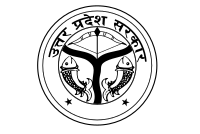Water supply and sanitation in Uttar Pradesh
This article has multiple issues. Please help improve it or discuss these issues on the talk page. (Learn how and when to remove these template messages)
|
Water supply and sanitation in Uttar Pradesh is characterized by its numerous recent achievements and many major challenges. The Indian state has often been below the National average in important parameters. Sanitation and water supply has always been a major agenda in the politics especially in regions such as Bundelkhand. While the state confronts issues such as unequal resource distribution and water contamination, concerted efforts have been made to extend access to safe water and enhance sanitation facilities. Government-led initiatives, often in collaboration with private sector entities and grassroots organizations, strive to address these challenges. However, persistent issues persist, particularly in rural areas and urban slums, underscoring the need for sustained attention and innovative solutions.
Access[edit]
India's most populous state with a population exceeding 200 million people, Uttar Pradesh faces significant challenges in managing its water resources and ensuring everyone has access to safe sanitation facilities. Over the centuries, communities in Uttar Pradesh have grappled with the importance of water management and sanitation practices.[1]
According to the National Family Health Survey 2 (NFHS2), conducted in Uttar Pradesh, only 85.6% of the population had access to an improved water source, while a mere 26.7% had access to a latrine.[1] However, significant progress has been made since then. Subsequent surveys indicate that access to improved water sources has increased substantially to 99.2%, and access to latrines has also shown a remarkable improvement, now reaching 68.7% of the population.[2]
Despite significant progress in improving access to sanitation facilities, Uttar Pradesh still grapples with open defecation, particularly in rural areas, where approximately 29% of the population continues to defecate in the open.[2] Additionally, the state faces challenges such as water scarcity in many parts, further complicating efforts to ensure adequate sanitation and hygiene practices.[3]"A study by the Centre for Science and Environment 2019 in some cities of Uttar Pradesh shows that most (about 80%) containment systems are often not connected to functional soak pits."[4]
References[edit]
- ^ a b "NFHS-2 FACT SHEET STATES" (PDF). National Family Health Survey (2). Ministry of Health and Family Welfare: 2. 2000-02-01.
- ^ a b National Family Health Survey 5 2019-21 Uttar Pradesh https://dhsprogram.com/pubs/pdf/FR374/FR374_UTTARPRADESH.pdf
- ^ Uttar Pradesh State Water Policy, 2020 https://upgwd.gov.in/MediaGallery/SWPUP2020DraftFeb20.pdf
- ^ Urban Wastewater scenario in India |NITI Aayog| pp19 https://www.niti.gov.in/sites/default/files/2022-09/Waste-Water-A4_20092022.pdf

